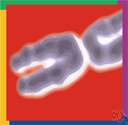au·to·some
(ô′tə-sōm′)n.
A chromosome that is not a sex chromosome.
au′to·so′mal (-sō′məl) adj.
au′to·so′mal·ly adv.
American Heritage® Dictionary of the English Language, Fifth Edition. Copyright © 2016 by Houghton Mifflin Harcourt Publishing Company. Published by Houghton Mifflin Harcourt Publishing Company. All rights reserved.
autosome
(ˈɔːtəˌsəʊm)n
(Genetics) any chromosome that is not a sex chromosome
ˌautoˈsomal adj
Collins English Dictionary – Complete and Unabridged, 12th Edition 2014 © HarperCollins Publishers 1991, 1994, 1998, 2000, 2003, 2006, 2007, 2009, 2011, 2014
au•to•some
(ˈɔ təˌsoʊm)n.
any chromosome other than a sex chromosome.
[1905–10]
au`to•so′mal, adj.
au`to•so′mal•ly, adv.
Random House Kernerman Webster's College Dictionary, © 2010 K Dictionaries Ltd. Copyright 2005, 1997, 1991 by Random House, Inc. All rights reserved.
ThesaurusAntonymsRelated WordsSynonymsLegend:
| Noun | 1. |  autosome - any chromosome that is not a sex chromosome; appear in pairs in body cells but as single chromosomes in spermatozoa autosome - any chromosome that is not a sex chromosome; appear in pairs in body cells but as single chromosomes in spermatozoachromosome - a threadlike strand of DNA in the cell nucleus that carries the genes in a linear order; "humans have 22 chromosome pairs plus two sex chromosomes" |
Based on WordNet 3.0, Farlex clipart collection. © 2003-2012 Princeton University, Farlex Inc.